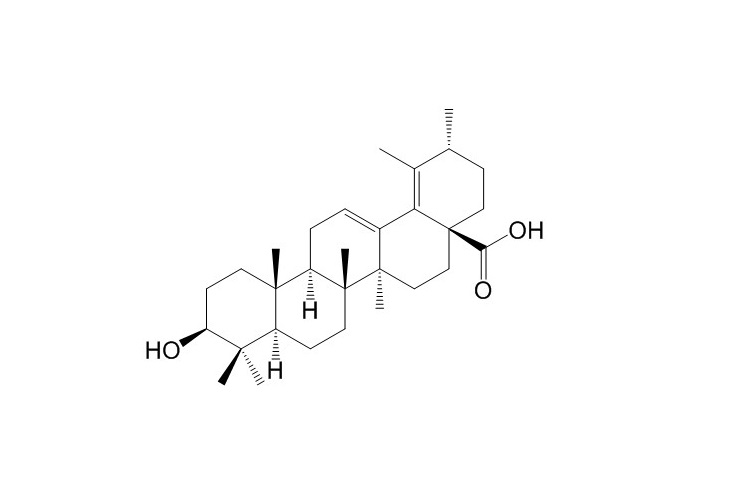Home
Products
Randialic acid B



| Product Name | Randialic acid B |
| Price: | $570 / 5mg |
| Catalog No.: | CN07208 |
| CAS No.: | 14021-14-8 |
| Molecular Formula: | C30H46O3 |
| Molecular Weight: | 454.7 g/mol |
| Purity: | >=98% |
| Type of Compound: | Triterpenoids |
| Physical Desc.: | Powder |
| Source: | The roots of Ilex asprella |
| Solvent: | Chloroform, Dichloromethane, Ethyl Acetate, DMSO, Acetone, etc. |
| SMILES: |
| Contact us | |
|---|---|
| First Name: | |
| Last Name: | |
| E-mail: | |
| Question: | |
| Description | Randialic acid B, a triterpenoid compound, is a formyl peptide receptor 1 (FPR1) antagonist. Randialic acid B blocks FPR1 in human neutrophils and attenuates psoriasis-like inflammation in vivo[1]. |
| In Vitro | Randialic acid B (0.1-3 μM; for 5 min) selectively inhibits reactive oxygen species production, elastase release, and CD11b expression in human neutrophils activated by FPR1. Randialic acid B inhibits the binding of N-formyl peptide to FPR1 in human neutrophils, neutrophil-like THP-1 cells, and hFPR1-transfected HEK293 cells, indicating FPR1 antagonism[1]. Randialic acid B acts competitively for its binding to the FPR1 receptor. The FPR1-downstream signaling such as Ca2+ mobilisation and activation of Akt and MAPKs is also competitively inhibited[1]. Randialic acid B shows significant cell-protective effects against H2O2-induced H9c2 cardiomyocyte injury[2]. |
| In Vivo | Randialic acid B (10 mg/kg; i.v.; every other day; for 5 days) significantly reduces Imiquimod-induced psoriasis-like symptom, including epidermal hyperplasia, desquamation with scaling, neutrophil skin infiltration, and transepidermal water loss[1]. Animal Model: BALB/c white female mice (20 g weight; 7-week-old) treated with Imiquimod[1] Dosage: 10 mg/kg Administration: i.v.; every other day; for 5 days Result: Significantly reduced Imiquimod-induced psoriasis-like symptoms. |
| Exact Mass | 454.34500 |
| PSA | 57.53000 |
| LogP | 7.15370 |